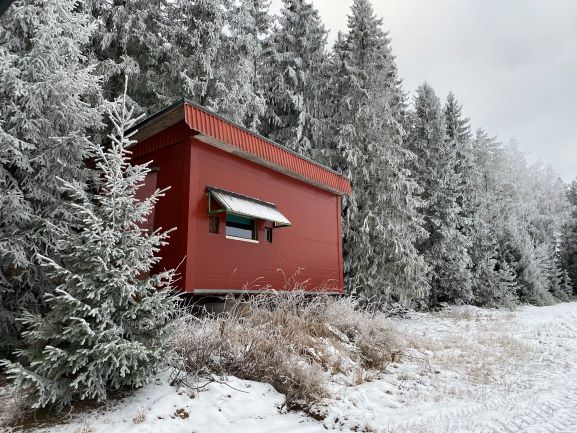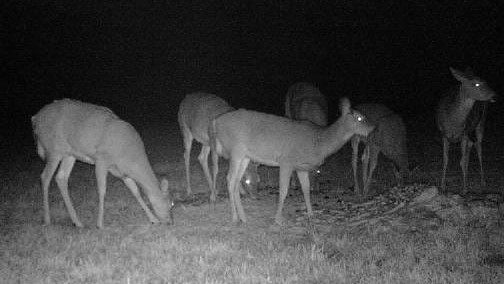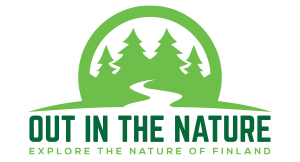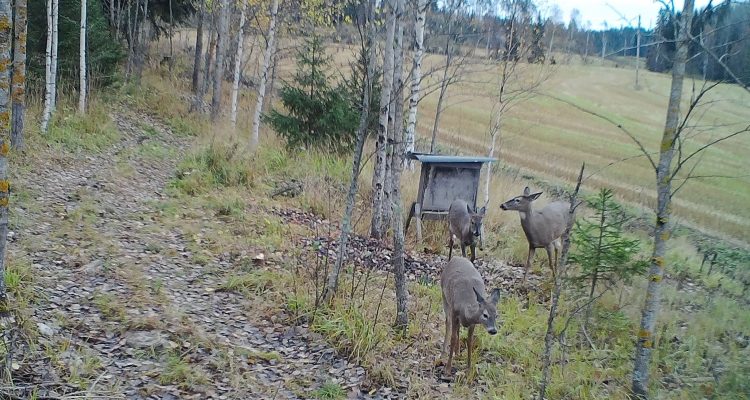Deer hunting in Finland is a common hobby as there are large populations of fallow deer, white tailed deer, and roe deer roaming in our forests. The deer hunting season is almost over, but here’s some basic information about the deer hunting in Finland. Even if you are not into hunting, it is useful to know something about it when spending time outdoors among all the deer and hunters.
Deer species in Finland
Native deer species that can be encountered in Finland are roe deer, Finnish forest reindeer, and Eurasian elk, more commonly known as moose:
- Roe deer (Capreolus capreolus) = Metsäkauris in Finnish
- Finnish forest reindeer (Rangifer tarandus fennicus) = Metsäpeura
- Eurasian elk (Alces alces) = Hirvi
In addition to the native deer species, Finland is home to a thriving white-tailed deer (valkohäntäkauris) population. In the early spring of 2022, there were roughly 109,000 white-tailed deer in southwestern Finland. White-tailed deer are the most significant type of game animals in that region. Fallow deer is invasive species in Finland, and red deer is not common in Finland. The reindeer you come across in Lapland are domesticated animals and should not be hunted.
- White-tailed deer (Odocoileus virginianus) = Valkohäntäpeura / valkohäntäkauris
- Fallow deer (Dama dama) = Kuusipeura (jalohirvi)
- Red deer (Cervus elaphus) = Saksanhirvi / punahirvi / isokauris
What is required for the deer hunting in Finland?
The hunting is regulated by the Hunting Act and the Hunting Decree. There are also several other acts and decrees concerning weapons, animal welfare and nature conservation. Hunting is practised in accordance with the principles of sustainable use and ensuring that game animal populations are not endangered and that unnecessary suffering is not cause for the animals.
New hunters must sign up for a course to pass hunting examination. After the hunting examination they are able to obtain a hunting card, which is required from everyone who hunts in Finland. The hunting card basically equals to a game management fee, which is renewed on a yearly basis from August to July. Hunting insurance is included in the game management fee. Hunters need to have license for firearms and all firearms must be stored in a locked cabinet when not used for hunting. A shooting test is required for deer hunting, or a bow shooting test if you are hunting with a bow. Shooting tests are organized usually in the summer or early autumn before the hunting season begins.
In Finland, hunting rights go with land ownership. Most of the land is owned privately, and the landowners can lease the hunting right on their property to another party. Hunters have established hunting associations (hunting clubs) and rented areas for hunting from the land owners. Metsähallitus, Parks and Wildlife Finland, is the hunting right holder on state-owned areas, which are concentrated in the east and north of the country.
So, in addition to the hunting card and passed shooting test, hunters pay the membership fee for local hunting clubs. There are currently over 4,000 hunting clubs in the country. Hunting clubs manage the deer hunting quotas in their area and hunters pay also per killed deer to their club. Roe deer don’t have quotas, but also their kills must be reported.
For foreigners who are interested in hunting in Finland, the Finnish Wildlife Agency provides more detailed information about the requirements and whether their earlier hunting cards or shooting tests are valid in Finland. The Finnish Wildlife Agency promotes sustainable game husbandry, supports the activity of game management associations, and sees to the implementation of wildlife and game policy in Finland.
Deer hunting cabins are a common sight in the forest
You might have seen tiny cabins with a door and window and perhaps even wheels under it in the middle of the forest. In front of the cabin, you might see a pile of apples or carrots, tray of oats, or a salt stone. These cabins are used to stalk the deer. Hunters go to the cabins early in the morning when it’s still dark or in the afternoon when it’s getting dark, and wait for the deer. Usually, the cabins are equipped with a small gas heater as it gets cold when waiting for hours in late autumn or during winter. The window opens towards the feeding station and allows hunters to shoot the deer directly from the cabin. You should avoid wandering around the feeding stations and in front of the cabins in the dark!

You might also see open towers in the forest, especially in open areas such as under electricity lines. Those are often used in moose hunting when hunters are waiting and the dogs are chasing the moose. They can also be used in deer hunting, but not as much as the hunting cabins.
White-tailed deer population went from one buck to over 100,000 in 80 years
According to a legend Finland’s white-tailed deer population can be traced back to one single buck brought over from the US in 1934.
In 1934 a member of Finland’s hunting association Rafael Haarla offered to host the imported deer on his land at Laukko Manor, in the municipality of Vesilahti in the southern region of Pirkanmaa. Eight deer were captured near the Minnesota city of Virginia, but one animal died before shipping and a storm on the sea led to the death of two of the bucks on board, meaning that only one male survived the journey. In 1938, the animals escaped from the Laukko Manor. In the 40s a new shipment was made and three females and one male that survived the journey were released into the wild. Some sources say that these deer that arrived in 1948 died already the following winter. So, it is possible that the entire population of white-tailed deer that roams Finnish forests today has descended from those first five individuals that were brought to the country in 1934. White-tailed deer are also referred as Laukko deer in Finland.
Today the white-tailed deer population is thriving. It has spread to almost every corner of the southern part of the country. I have been told that Finland is the only country in Europe where it is allowed to hunt wild the white-tailed deer. And hunting is necessary as there are thousands of collisions yearly, and deer damage farmers’ crops and seedlings, not to mention them spreading ticks.

Deer meat is highly valued
Lean deer meat is an important protein for many hunters’ families, but it’s not as easily available in grocery stores as you would imagine. Few reasons behind that are the price paid for hunters and logistics. It is a lot of voluntary work for hunters and therefore many of them are happy just filling their own freezer with the meat. If the meat is sold to consumers, facilities where the meat is hung and cut also has to be registered for groceries, and the meat has to be stored in cold during transportation.
What should you do if you happen to hit a deer with your car?
Car accidents involving a moose or deer are quite common in Finland. What should you do if you happen to hit a deer with your car?
The first priority is to warn other road users to prevent further accidents by switching on your car’s hazard-warning lights. You should move your car, if you can, to a bus stop or by the road so that it is not in the middle of the road. All cars are equipped with a red warning triangle, and it’s good to take that triangle few hundred meters before the car to warn approaching drivers of your car.
If people got hurt, you need to help them first. Notify the police of the accident by using 112 app in your phone (and allowing them to see your exact location) or calling 112 and describing your location. Calling the 112 is important even if nobody got hurt when animals are involved.
If the deer is dead on the road, drag it onto the roadside verge. If the deer is injured, it has to be euthanized. You don’t have to do that; you can wait for the police or a local hunter to arrive. But leave enough distance to the injured animal in order not to cause it additional distress while waiting. And for your safety remember that the injured animal can be unpredictable.
If the deer has left the accident scene, it is recommended to wait for the police or local hunter to arrive. Don’t try to track the animal down by yourself as you would mess up the tracks. If you are given the permission to leave the scene before anyone arrives, you should mark it (for example with this printed sign) so that the officials know where the accident happened when they come to track the deer.
Read also
- All you need to know about moose hunting in Finland
- Deer keds that annoy the crap out of you in the autumn
- Out in the Nature Quiz – Animal tracks in the snow


Good morning,
i’m an italian hunter with ungulate licence hunting; i’d like to know if is possible for me to hunt in your reserve and if yes how can i apply?
Hope to her from you soon,
Best Regards
Beppino Albiero.
Here is some more information:
What is needed for hunting in Finland
Eräluvat website for hunting permits